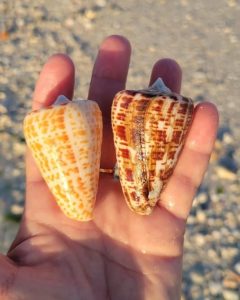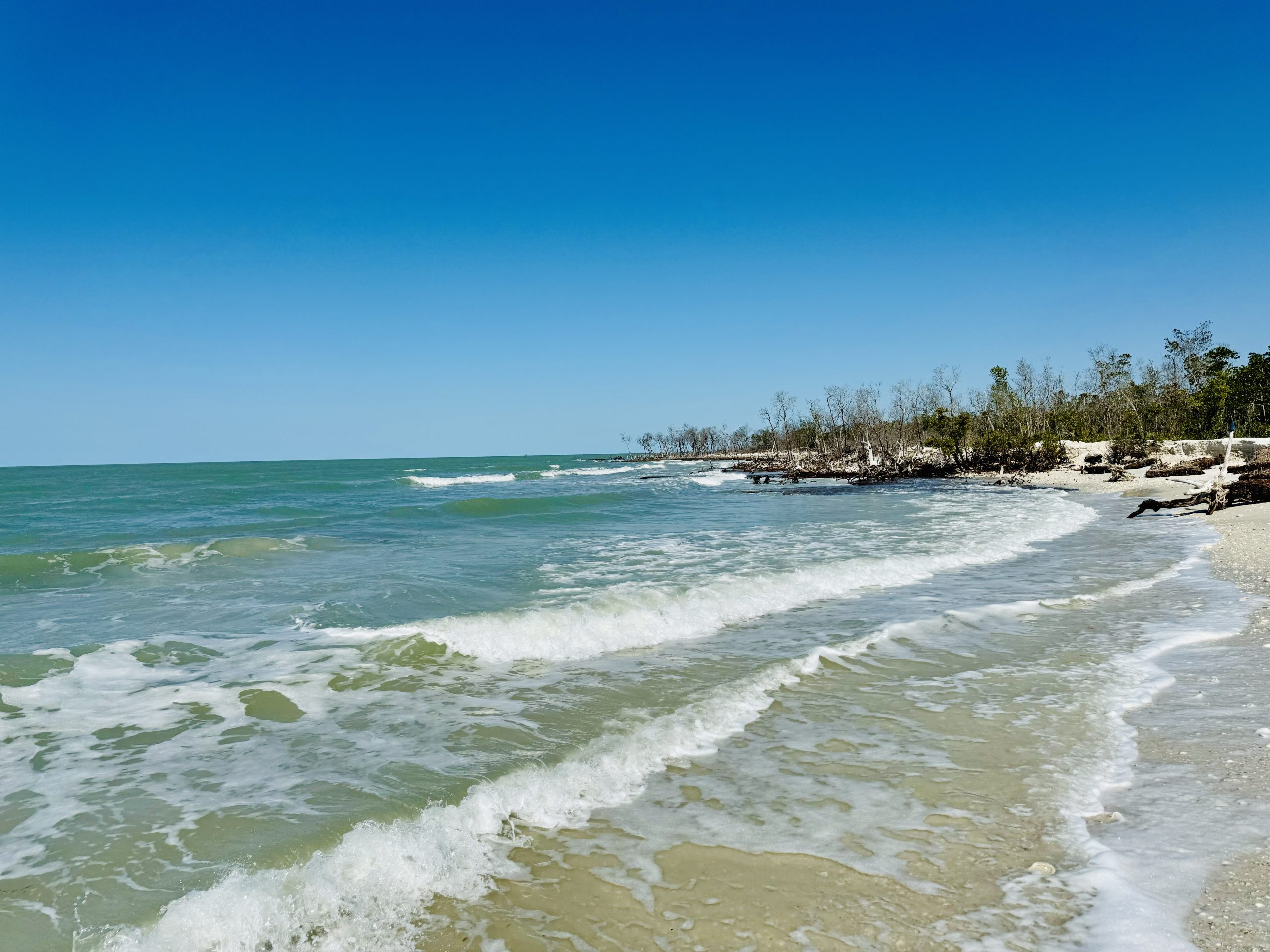Embark on a Shelling Adventure
Greetings, fellow shell enthusiasts! I’m your local shelling expert, a Florida Master Naturalist and Shell Guide for Treasure Seekers Shell Tours. Today, we’re setting sail for the captivating Morgan Island, a haven of pristine beaches and a treasure trove of exquisite seashells nestled within the Ten Thousand Islands National Wildlife Refuge.
A Serene Escape with a Storied Past
Morgan Island, a tranquil oasis within the Ten Thousand Islands National Wildlife Refuge, offers a unique blend of natural beauty and historical significance. This secluded island, accessible only by boat, has captivated visitors with its pristine beaches, diverse wildlife, and intriguing past.
A Glimpse into the Past
While the exact origins of human habitation on Morgan Island remain somewhat shrouded in mystery, archaeological evidence suggests that Native American tribes may have inhabited the island centuries ago. These indigenous peoples likely utilized the island’s abundant resources, including seafood and plant life.
In more recent history, the island is named after Captain John Morgan, a pioneer settler who established a fishing camp here in the early 1900s. The remnants of his settlement, including old buildings and artifacts, can still be found on the island, offering a glimpse into the region’s past.
A Protected Paradise
Today, Morgan Island is part of the Ten Thousand Islands National Wildlife Refuge, managed by the U.S. Fish and Wildlife Service. This vast network of islands and waterways provides critical habitat for a diverse array of wildlife, including endangered species like the Florida panther and the manatee. The refuge is dedicated to protecting the delicate ecosystem and ensuring the island’s natural beauty remains intact.
Shelling Paradise
While Morgan Island’s history is fascinating, it’s the island’s stunning natural beauty and abundant marine life that truly captivate visitors. The pristine beaches are a shell collector’s dream, offering a treasure trove of shells, including:
A Serene Escape with Endless Shelling Opportunities
Morgan Island beckons with its untouched beauty. As you explore its white-sand shores, keep your eyes peeled for a dazzling array of seashells, each a testament to the vibrant marine life teeming beneath the waves. Among these treasures, three magnificent finds stand out:
1. The Alphabet Cone (Conus sp.)

-
- A Stealthy Predator: The Alphabet Cone is a master of disguise, blending seamlessly into its surroundings. Its intricate patterns and vibrant colors mimic the ocean floor, allowing it to ambush unsuspecting prey.
-
- Habitat and Diet: These carnivorous snails typically dwell in shallow, sandy or muddy areas. They inject a potent venom into their prey, which can be small fish, worms, or other mollusks.
-
- Reproduction: Reproduction involves external fertilization. Females lay egg capsules that hatch into planktonic larvae, which drift with the currents until they settle on the seabed.
-
- Where to Find Them: Look for Alphabet Cones washed ashore along the high tide line or partially buried in the sand. They often congregate in specific areas, particularly after storms.
-
- Identification Tips:
-
- Pattern and Color: The intricate patterns and vibrant colors are unique to each species.
-
- Conical Shape: The distinctive conical shape is characteristic of cone shells.
-
- Identification Tips:
2. The King’s Crown (Melongena corona)
-
- A Regal Marine Dweller: The King’s Crown, with its distinctive crown-like spines, is a majestic sight. Its powerful foot allows it to burrow through the sand in search of prey.
-
- Habitat and Diet: King’s Crowns are often found in shallow, sandy or muddy areas, particularly near oyster beds. They are carnivorous, feeding on clams, oysters, and other mollusks.
-
- Reproduction: Reproduction involves external fertilization. Females lay egg capsules that hatch into planktonic larvae, which drift with the currents until they settle on the seabed.
-
- Where to Find Them: Look for King’s Crowns washed ashore along the high tide line or partially buried in the sand, especially near oyster beds.
-
- Identification Tips:
-
- Crown-like Spines: The distinctive crown-like spines are a key identifying feature.
-
- Robust Shell: The thick, heavy shell is characteristic of this species.
-
- Identification Tips:
3. The Horse Conch (Triplofusus giganteus)
-
- A Gentle Giant of the Sea: The Horse Conch is one of the largest marine snails in the world. Its massive shell and powerful foot make it a formidable creature.
-
- Habitat and Diet: Horse Conchs are often found in shallow, sandy or muddy areas. They are carnivorous, feeding on clams, oysters, and other mollusks.
-
- Reproduction: Reproduction involves external fertilization. Females lay egg capsules that hatch into planktonic larvae, which drift with the currents until they settle on the seabed.
-
- Where to Find Them: Look for Horse Conchs washed ashore along the high tide line or partially buried in the sand. They are often found in deeper water, so be cautious when searching for them.
-
- Identification Tips:
-
- Massive Size: The large size is a clear indicator.
-
- Spiral Shape: The distinctive spiral shape sets it apart from other shells.
-
- Identification Tips:
Preserving Morgan Island’s Ecological Balance
Morgan Island is an integral part of the Ten Thousand Islands National Wildlife Refuge, carefully managed to protect its delicate ecosystem. The island’s vibrant mangrove forests provide vital nesting and breeding grounds for countless fish, birds, and invertebrates. Observing these intricate interactions underscores the importance of safeguarding this fragile environment.
Ethical Shelling Practices: Essential for a Sustainable Future
As we marvel at the beauty of seashells, let’s embrace ethical shelling practices. Remember, many shells serve as homes and shelters for marine creatures. To ensure the island’s ecosystem remains healthy, let’s collect only empty shells, allowing living ones to continue their vital roles in the island’s web of life.
Supporting Conservation and Reporting
Our responsibility as visitors extends beyond simple admiration. If you encounter any environmental concerns, such as pollution or changes to the ecosystem, please report them to the relevant authorities or organizations. At Treasure Seekers Shell Tours, we prioritize sustainable travel and actively promote the protection of these precious ecosystems.
Embark on Your Morgan Island Adventure
Ready to experience the magic of Morgan Island firsthand? Join us at Treasure Seekers Shell Tours, where our expert guides will transform your visit into an unforgettable learning experience. We’ll not only help you discover an abundance of shells but also provide in-depth insights into the island’s fascinating ecology and history.
Don’t forget to check out our informative video about shelling in the Ten Thousand Islands: Link to Youtube video
Questions? Check Our FAQ’s to Learn About What to Expect
#MorganIsland #TenThousandIslands #Shelling #Beachcombing #Nature #Florida #EcoTourism #Conservation
